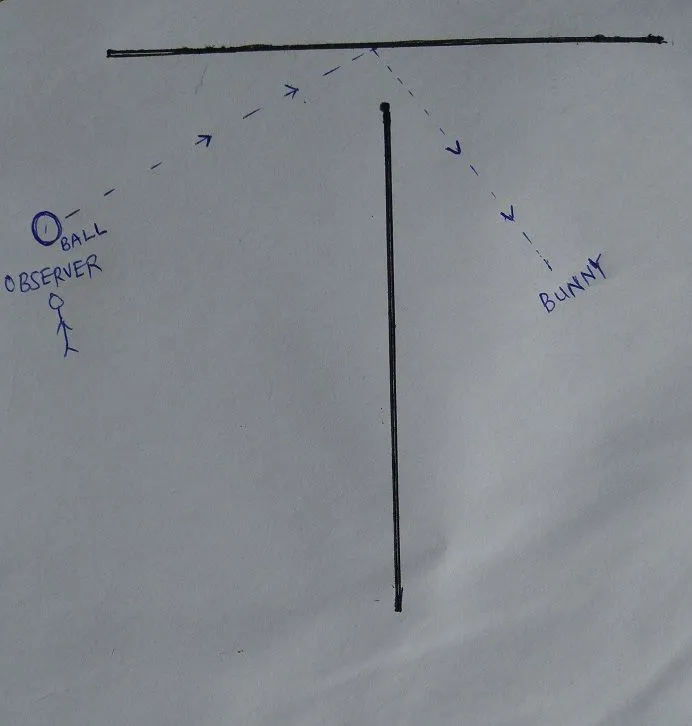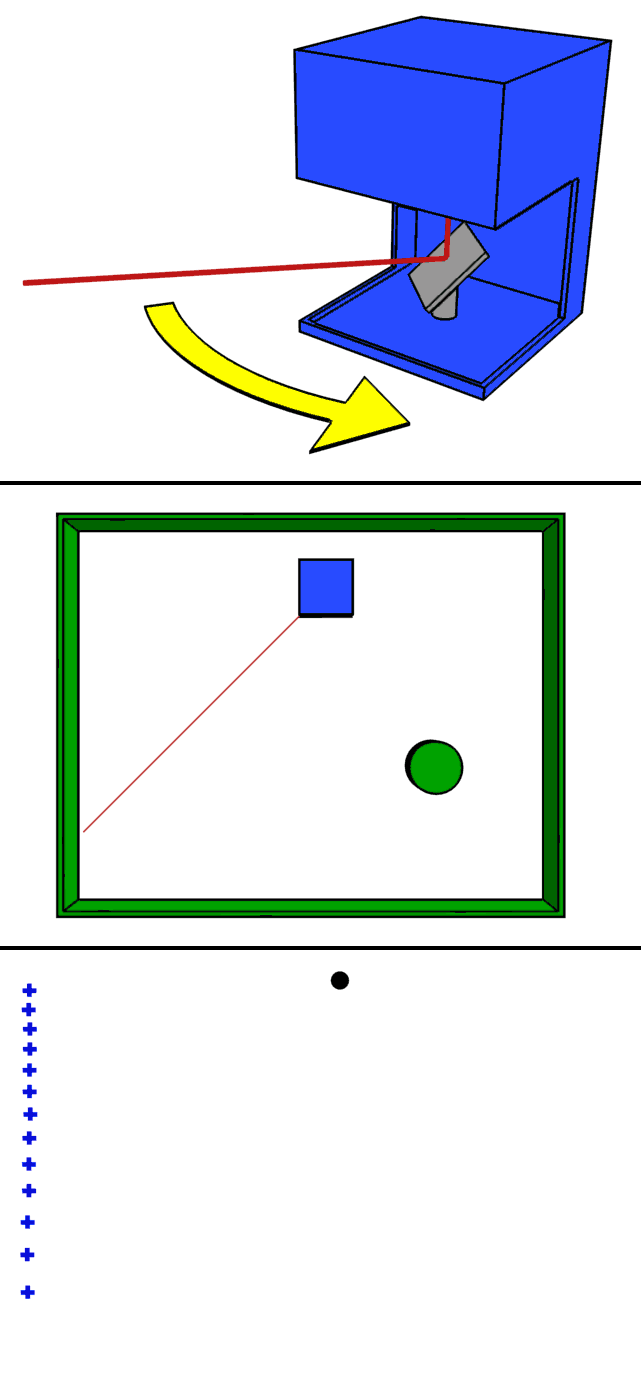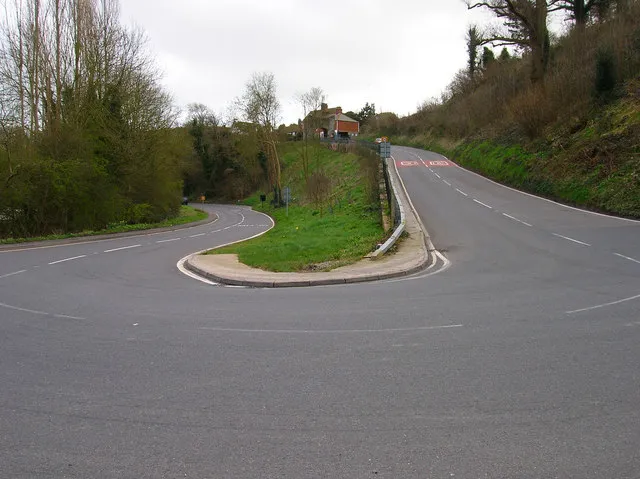We all love when movies bring the impossible to life. From villains outrunning bullets to them dodging bullets; thank you The Matrix.
But we all know that bullets are fast. Yes, they are quick. The muzzle velocities of guns range from 120 meters per second (m/s) to 1200 m/s. That is why you never really hear the bullet that kills you.
Sorry movie lovers, the only bullets you can dodge is one from a nerf gun giving its slow speed of between 11m/s to 14 m/s.
Now, some movies try to do the impossible physics of curving a bullet. The Wanted movie pulled off this trick when Wesley was undergoing training with the beautiful Angelina Jolie standing in front of the target.
Well, this "curved bullet" scene had since being discredited by The MythBusters here to be impossible.
Fans of the 1982 Blade Runner will remember the Esper Machine scene, the machine capable of infinite zooming and able to see around obstructions.
In real life, the engineers have come up with yet another "impossible" device, a machine with Esper-like capability. The ability to see around a corner. Talk about bending the laws of physics.
Get Yourself a Laser
The Stanford engineers had a setup that may interest any three-year-old, at first glance. It involves a bunny doll that hides behind a T-shaped wall.
The hidden doll is impossible to see from the other side of the wall but thanks to a laser that we now can view it. This video from Stanford University explains in greater detail.
The laser is not an ordinary laser but a picosecond laser which can fire short pulses for the duration of just 10-12 seconds or 1/1,000,000,000,000 (one trillionth) of a second. It is a rapid firing of photons coupled with the added advanced computation which the laser to see around that corner.
This technology is not one hundred percent new. It leverages on the LIDAR (light detection and ranging) remote sensing system method of 3D mapping of the environment.
The lidar system employed in self-driving cars maps the environment by sending out the pulsed laser and calculate the flight time it takes the pulsed photons to reflect off objects and get back to the car giving it the navigation information it needs to safely move without running over a pedestrian or damaging the objects on the road.
The system employed to look on the hidden object in the corner is similar but requires much more complexity.

Own illustration
Now to imagine how the laser does this magic, think of two walls that meet to make a t-shape. Pull the walls a little apart at the point of the t-junction to create a space. Place a bunny on the other side of the wall, and stand on one tail end of the leg. You, the observer, cannot see this bunny while standing on the other leg of the t-wall. But if you throw a ball at an angle through the open space at the t-junction, it will deflect off the wall and knock down the hidden bunny on the other side of the wall.
For the device, the ball is the picosecond laser that fires the millions of photons per second. The light follows the same trajectory as the ball, hits the wall and gets deflected onto the bunny, then bounces off the bunny, and back to the wall which deflects it again to the observer. That laser light then received is analysed by some sophisticated algorithms that in turn produces the 3-D image of the hidden bunny.
But the bouncing to and fro of the light from observer to object and back to observer leaves a super faint traces of the signal. Thus a precise laser and detector technology provided by the single-pixel avalanche diode array or SPAD is what is needed since it can record in ultrafast mode (100,000 billionths of a second, 10-15) the scattered light pulse arrival time to a mind-boggling accuracy.
The SPAD is a very sensitive sensor that could display an avalanche of current from a single photon that hits it.
The problem is not solved as there are other objects in the vicinity of the bunny. There should be a way to differentiate the light pulses that bounce off it from, say, another object nearby.
This ambiguity could be resolved by separating stationary and moving objects. Moving objects could easily be detected and isolated since it will generate a virtual signal that changes with time.
The major obstacle in the technology of peeking around corners, remains the number of lost signals, especially after bouncing off various surfaces.
"The biggest challenge is the amount of signal lost when light bounces around multiple times," says Stanford's Matthew O'Toole, lead author on the paper. "This problem is compounded by the fact that a moving car would need to measure this signal under bright sunlight, at fast rates, and from long range." Wired
Applications
Of course, the leading application of this technology is in self-driving cars and even in regular vehicles. Who wouldn't want to know what is behind those hairpin corners while speeding on the freeway? I know I would.
It will help detect and identify people trapped during home fires, or victims of natural disaster trapped in hard to be seen areas amidst the rubbles.
The US Defense Department’s Advanced Research Projects Agency (DARPA) in 2016 awarded the Morgridge Institute for Research and University of Wisconsin-Madison a sum of $4.4 million grant to work on cameras that could see around corners.
The military and law enforcement application would make for a safer analysing of hostile situations and assess threats during combat or arrest.
That is one technology that could revolutionise the way we see things and seem to have quite a bright future ahead of it.
What do you think?
REFERENCES
- Muzzle velocity
- Recovering three-dimensional shape around a corner using ultrafast time-of-flight imaging
- The amazing camera that can see around corners
- WANNA SEE AROUND CORNERS? BETTER GET YOURSELF A LASER
- Stanford researchers develop technique to see objects hidden around corners
If you write STEM (Science, Technology, Engineering, and Mathematics) related posts, consider joining #steemSTEM on discord here. If you are from Nigeria, you may want to include the #stemng tag in your post. You can visit this blog by @stemng for more details. You can also check this blog post by @steemstem here and this guidelines here for help on how to be a member of @steemstem. Please also check this blog post from @steemstem on proper use of images devoid of copyright issues here



